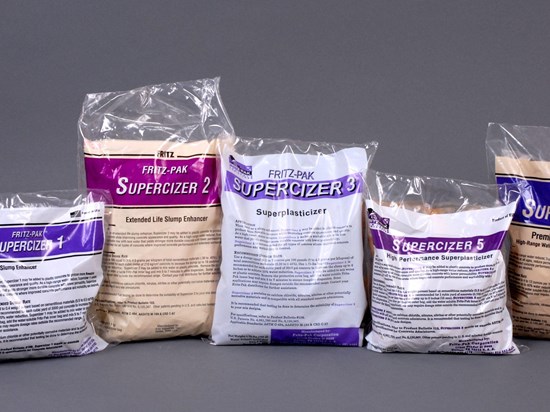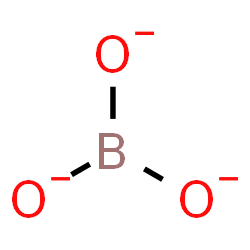Role of Admixture in Concrete
Concrete admixtures are additives or natural or manufactured chemicals that are added during the mixing of concrete to enhance specific properties of the hardened and/or fresh concrete. These properties include durability, workability, and early and final strength of concrete admixtures.

Fig 1: Admixtures in Concrete
Courtesy: Happho
Functions of Concrete Admixture
The primary functions of concrete admixtures are:
- To modify the hardened concrete properties
- To retard or reduce heat generation
- To accelerate the rate of strength development
- To enhance freezing resistance
- To reduce permeability
- To reduce insulation or isolation
- To reduce bleeding
Categories of Concrete Admixture
There are two main categories of concrete admixtures:
- Mineral Concrete Admixture: These admixtures make concrete more economical, enhance strength, decrease permeability, and influence other concrete properties. They alter the nature of the hardened concrete through hydraulic or pozzolanic activity.
- Chemical Concrete Admixture: These admixtures are used in the mixing of concrete to enhance the performance of concrete. They are used during the mixing, transporting, placement, and curing of concrete to improve the quality of concrete.
Functional Requirements and Corresponding Chemicals
This section explores the crucial role of concrete admixtures in meeting specific functional requirements and addressing diverse needs in construction. From enhancing early strength to avoiding surface imperfections, maintaining durability, reducing curing time, and ensuring workability and viscosity, a spectrum of chemical additives plays a pivotal role. The careful selection and precise dosage of these chemicals significantly impact the performance and longevity of concrete structures.
| Sl No. |
Functional Requirement |
What chemicals are to be added |
| 1 |
High Early Strength |
- Calcium Chloride: It is standardized by ASTM C 494. It is available as pellets or other granules, flakes, or in solution form. The regular flake form contains a minimum of 77% calcium chloride, and the pellet and other granular forms a minimum of 94%. For a standard concrete mix, between 0.5 and 2.0% of the total weight of the cement should be added. This means that for a 50–pound bag of cement, between 0.25 and 1.0 pounds of calcium chloride should be added. In another term, you will generally need to add calcium chloride at a ratio of two pounds per 100 pounds of concrete. The maximum permissible limit for the addition of calcium chloride is 2% in flake form.
- Triethanolamine: It can be used as a grinding-aid agent in the cement-producing process, and it can also be used to formulate high-performance concrete admixtures. It is recommended to add TEA at a rate of 0.02% to 0.03%. However, the exact amount can vary depending on factors such as the type of cement used, the desired setting time, and the specific project requirements. If the adding rate is higher than 0.03%, TEA may retard the setting of concrete.
- Sodium Thiocyanate: As for the proportion to be added, admixtures are typically added only in small quantities, usually less than or equal to 1-2% of the cement mass.
- Calcium Formate: It is a chloride-free chemical admixture. It is beneficial for work at low temperatures and for the inhibition of corrosion of metal substrates. In summer, the dosage of calcium formate is usually 0.3% to 0.7% of cement. In winter, the dosage of calcium formate should increase with the decrease in temperature, generally 0.5% to 1%, and the highest should not exceed 2.5%
- Calcium Nitrite or Calcium Nitrate: It is an alkali-free anti-freezing agent. The setting acceleration may be achieved by small dosages (in the range of 0.2% – 1.0% dry admixture by mass of cement). The interaction with polymers but also strength enhancement demands moderate dosages (1% – 3%). The corrosion inhibition requires high dosages (3% and above). Normally, the amount of standard addition of existing accelerators is approximately 3~5 L per 100 kg of cement (4~7% of the cement mass), depending on the ambient temperature.
|
| 2 |
Avoid Bug Holes/ Pin Holes/ Surface Holes |
- Alkylbenzene sulfonates: They can be used as air-entraining admixtures. They are anionic (water-hating) agents that form tough, elastic, air-filled bubbles. These bubbles reduce stresses caused by the movement or freezing of water. They are formed by sulfonation of alkylbenzene, usually containing a linear chain of 10-13 carbon atoms. As a result, alkylbenzene sulphonic acid (ABS acid) is obtained. They provide more volume for expansion and a shorter flow path. This can help in reducing the occurrence of bug holes in concrete. As for the proportion to be added, admixtures are typically added only in small quantities, usually less than or equal to 1-2% of the cement mass.
- Lignosulfonates: The dosage of lignosulfonates as an admixture in concrete can vary depending on the specific requirements of the concrete mix. However, general guidelines suggest that the addition of lignosulfonates can reach a maximum value at the addition of lignosulfonate as much as 0.2% of the cement weight.
- Hydroxylated carboxylic acids: An increase in the 28-day compressive strength of concrete can also be found, which can amount to 10-20%. As for the dosage, the typical dosage of a plasticizer, which includes hydroxylated carboxylic acids, varies from 200 ml to 450 ml per 100 kg of cementitious material.
- Polycarboxylates: They are also used to make flowing concrete with a slump of 175 mm to 200 mm, which can effectively be used in highly dense reinforced structures. The content of polycarboxylate is 2% (mass ratio) of cementitious components. Normally, with clay-free or low-clay sands, PCEs are dosed about one-third that of PNS-based superplasticizers for comparable slump. However, when clays are present in certain sands, up to a 50% higher dosage of PCE can be expected.
|
| 3 |
Maintain Durability |
- Borates: Borates are helpful in producing many types of cement, especially those high in belite, as they promote the formation of dicalcium silicate. Belite cement also improves compressive strength when borates are added as a dopant. The dosage is unclear as it depends on many factors. Hence, one should always approach a consultant for that.
- Magnesium Salts: Magnesium salts, specifically magnesium oxide (MgO), are used in concrete as a component of Sorel cement. Sorel cement is a mixture of magnesium oxide (burnt magnesia) with magnesium chloride. This type of cement is known for its excellent strength and durability. The chemical formula for Sorel cement corresponds to a weight ratio of 2.5–3.5 parts MgO to one part MgCl. In addition, a magnesia-based product has been shown to reduce shrinkage cracking by up to 90%, reducing water and salt infiltration. These compounds blend the expansive components of magnesia with a glycol ether agent that reduces surface water tension to defend against cracks.
|
| 4 |
Reduce Curing Time |
- Calcium Chloride (CaCl2): This is a common accelerator used to accelerate the time of set and the rate of strength gain. As for dosage, it is about 2% calcium chloride by weight of cement can be added for class C0 exposure, and about 0.5% can be added for C1 exposure. You will generally need to add calcium chloride at a ratio of two pounds per 100 pounds of concrete.
- Lignosulfonates: These are used as water-reducing admixtures. The dosage varies from 88.5-354 ml/ 45 kg of cementitious materials used.
- Hydroxylated Carboxylic Acids: These are used as organic retardants. They slow the initial setting time for at least an hour and no more than three hours when used at 65 to 100 degrees Fahrenheit. The dosage may vary and is not fixed. So, a consultant is expected.
|
| 5 |
Maintain Workability/Viscosity of Concrete |
- Xanthan Gum: Xanthan Gum is a polysaccharide that can be used as a Viscosity Modifying Admixture (VMA) in concrete. It’s particularly useful in the production of Self-Compacting Concrete (SCC), which is known for its high resistance to segregation, excellent deformability, and ability to be used without applying vibration in congested reinforced concrete structures characterized by difficult casting conditions. In one study, Xanthan Gum was included in the mixtures at various ratios ranging from 0.01% to 0.1% by weight of cement.
- Diutan Gum: Diutan Gum is a polysaccharide that can be used as a VMA in concrete. The use of Diutan Gum as a VMA, along with a superplasticizer, can ensure high deformability and adequate workability, leading to good resistance to segregation. This is because the Diutan Gum molecules form a network when the concrete is at rest, increasing the fresh concrete’s viscosity and inhibiting segregation. This prevents fines and mixed water from separating from the bulk concrete. In terms of dosage, Diutan Gum is typically used in the range of 0.01% to 0.15% by weight of cement.
- Colloidal Silica: It is useful in SCC, and in terms of dosage, colloidal silica is typically used at a rate of 150-1500 mls/100kg of total cementitious material.
- Styrene-maleic anhydride terpolymers: Styrene-maleic anhydride (SMA) is a synthetic polymer that is built-up of styrene and maleic anhydride monomers. It can be used as a Viscosity Modifying Admixture (VMA) in concrete. The main characteristics of SMA copolymer are its transparent appearance, high heat resistance, high dimensional stability, and the specific reactivity of the anhydride groups. The latter feature results in the solubility of SMA in alkaline (water-based) solutions and dispersion. Its dosage is not known but can be used after consultation.
|
| 6 |
Air Entrainment |
- Sodium Lauryl Sulphate: Sodium Lauryl Sulphate (SLS): SLS is a common anionic surfactant widely used in various products. In the context of concrete, it’s used as an air-entraining agent. SLS reduces the surface tension of the mixing water, promoting the development of microscopic bubbles and stabilizing them by forming a sturdy shell that repels water. This results in the creation of fine and stable air bubbles in the concrete. The performance of SLS as an air entrainer is superior to traditional sodium lauryl sulfates, as it is not sensitive to calcium salts, is non-hygroscopic, and is twice as efficient in producing controllable, strong, and stable micro foam. The dosage of air-entraining admixtures can vary from 16-131 ml/100kg of cementitious material.
- Stearic Acid: Stearic acid is a type of fatty acid that’s used as an air-entraining agent in concrete. Fatty acids like stearic acid are part of the larger group of air entrainers that include animal and vegetable fats and oils. The dosage of air-entraining admixtures can vary from 16-131 ml/100kg of cementitious material.
- Oleic Acid: Oleic acid is another type of fatty acid used as an air-entraining agent in concrete. It’s part of the same group of air entrainers as stearic acid. Oleic acid helps to enhance the workability of fresh concrete and the durability of hardened concrete. The alkali metal or triethanolamine salts of fatty acids such as oleic acid are used as air-entraining agents for concrete. The dosage of air-entraining admixtures can vary from 16-131 ml/100kg of cementitious material.
|
Name of the Companies that Deliver these Chemicals Globally

Fig 2: Calcium Nitrate
Courtesy: Carolina
Here are some companies that manufacture the chemicals as mentioned above in the table:
- Calcium Chloride: Occidental Petroleum Corporation, TETRA Technologies, Inc., Baker Hughes Company, Solvay S.A., Tangshan Sanyou Chemical Industries Co., Ltd., Qingdao City Media Co., Ltd, Tiger Calcium Services Inc., Ward Chemical Inc., Weifang Haibin Chemical Co., Ltd, Weifang Taize Chemical Industry Co., Ltd., and Zirax Ltd.
- Triethanolamine: Triethanolamine is manufactured by several companies worldwide. Here are a few of them:
- Dow Chemical Company: A leading global provider of advanced industrial solutions, including Triethanolamine.
- INEOS Oxide: A part of the INEOS Group of Companies, it is a leading producer of Ethylene Oxide and Ethylene Oxide Derivatives, including Triethanolamine.
- Huntsman Corporation: A global manufacturer and marketer of differentiated and specialty chemicals, including Triethanolamine.
- BASF: The world’s leading chemical company, BASF, offers Triethanolamine in its portfolio.
- SABIC: A global leader in diversified chemicals, SABIC manufactures Triethanolamine.
- Jiangsu Jiaerke Pharmaceuticals Group: A China-based company that specializes in the production of Triethanolamine.
- PetroChina Company Limited: One of the largest oil companies in China, PetroChina also manufactures Triethanolamine.
- Sodium Thiocyanate: Sodium Thiocyanate is manufactured by several companies worldwide. Here are a few of them:
-
- Jigs Chemical Limited: Based in Ahmedabad, India, this company offers Sodium Thiocyanate in a packaging size of 25kg.
- A B Enterprises: Located in Mumbai, India, A B Enterprises provides Sodium Thiocyanate in various packaging sizes.
- Kemical Konnect: Another Mumbai-based company, Kemical Konnect, offers Sodium Thiocyanate in loose packaging.
- Sona Enterprise: Based in Ahmedabad, India, Sona Enterprise offers Sodium Thiocyanate in a 25kg bag.
- Pearl Chemicals: Located in Mumbai, India, Pearl Chemicals provides Sodium Thiocyanate in a packaging size of 25kg.
- JK Chemicals: Based in Valsad, India, JK Chemicals offers Sodium Thiocyanate in a packaging size of 25kg.
- Calcium Formate: Lanxess (Germany), Perstorp (Sweden), Chongqing Chuandong Chemical (Group) Co. Ltd. (China), Geo Specialty Chemical Inc. (Ohio), and Zibo Ruibao Chemical Co. Ltd. (China), American Elements (US), Henan Botai Chemical Building Material Co. Ltd. (China), Shandong Baoyuan Chemical Co. Ltd. (China), Jiangxi Kosin Organic Chemical Co. Ltd (China) and Sidley Chemical Co. Ltd (China).

Fig 3: Calcium Formate Formula
- Calcium Nitrite or Calcium Nitrate: Haifa Group, UralChem, JSC, Yara International ASA, Ako Kasei Co., Ltd., Shanxi Jiaocheng Tianlong Chemical Industry Co., Ltd., Van Iperen B.V., and ProChem, Inc.
- Alkylbenzene sulfonates: Tamilnadu Petroproducts Limited, BASF SE, Stepan Company, Hansa Group AG, Clariant, Croda International Plc, etc.
- Lignosulfonates: Borregaard (Norway), Rayonier Advanced Materials (US), Sappi Limited (South Africa), Domsjo Fabriker (Sweden), and Nippon Paper Industries Co., Ltd. (Japan).
- Polycarboxylates: Here are some companies that manufacture Polycarboxylates:
- B&B Specialities (India) Pvt Ltd.: This company is a pioneer Polycarboxylate Ether manufacturer in India. They produce a variety of Polycarboxylate Ethers, including those for high water reducing, high retention, and high early strength gaining.
- Hibond: Hibond synthesizes Polycarboxylate Ether, the main raw material used for formulating everyday Hyper plasticizers.
- Chemipol (Kothari Group of Industries): Located in Mumbai, India, this company is a leading supplier of Polycarboxylate Ether.
- Stenfy Chem: Based in Daman, India, Stenfy Chem offers Polycarboxylate Ether Liquid 50% (HR, HWR) High Water Reducer.
- Agrosyn Impex: Based in Valsad, India, Agrosyn Impex offers Polycarboxylate Ether Powder (WR & SR) for industrial use.
- Sakshi Chem Sciences Private Limited: Located in Nagpur, India, this company offers Polycarboxylate Ether in liquid form.
- Borates: 3M, Avantor Inc, Minera Santa Rita, US Borax, Eti Maden, Gujarat Boron Derivatives.

Fig 4: Borate
Courtesy: ChemSpider
Conclusion
The role of admixtures in concrete is pivotal in achieving desired properties and performance, influencing aspects such as durability, workability, and early and final strength. The diverse functions of concrete admixtures, including modification of hardened properties, heat reduction, strength acceleration, and permeability reduction, underscore their versatility in addressing specific needs in construction. Moreover, the significance of admixtures in maintaining workability and viscosity is evident through the utilization of substances like xanthan gum, diutan gum, colloidal silica, and styrene-maleic anhydride terpolymers. These additives contribute to the production of self-compacting concrete and ensure high deformability. Understanding the global availability of these chemicals, various reputable companies manufacture and supply them, such as Occidental Petroleum Corporation, BASF, and Dow Chemical Company.




